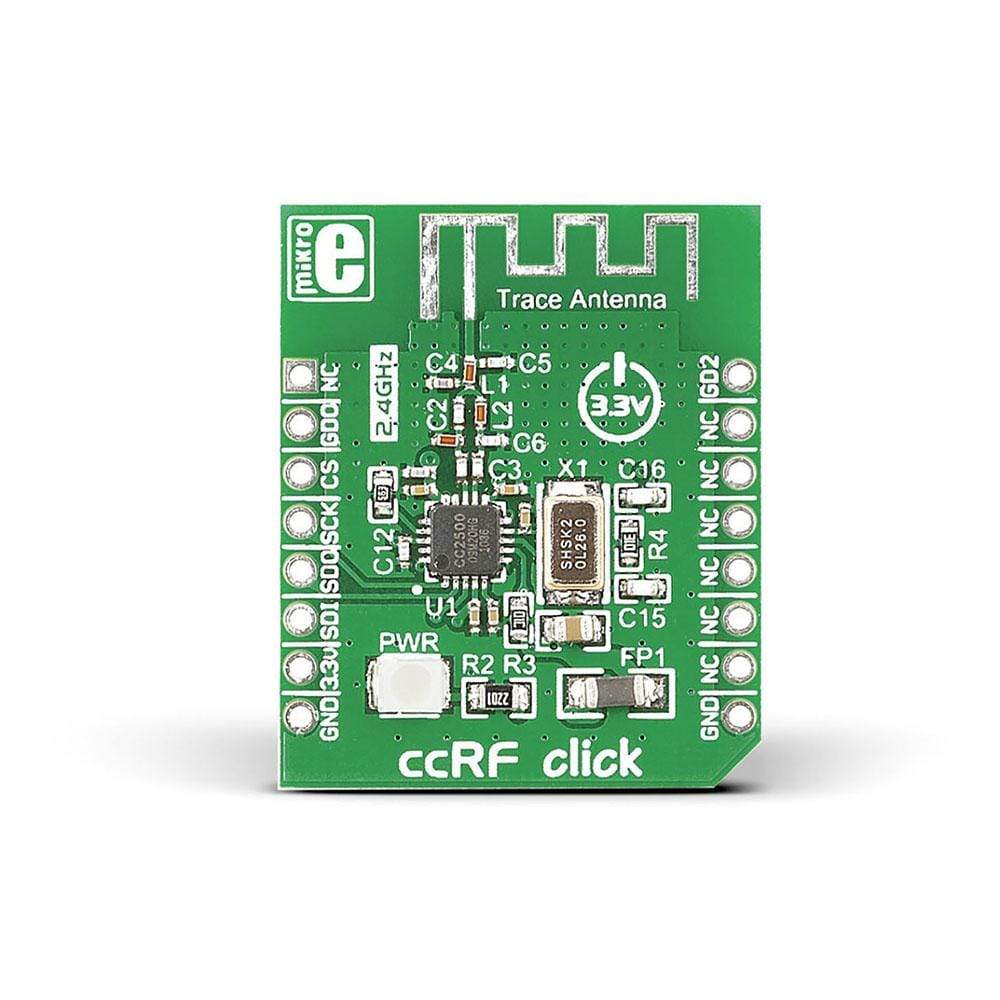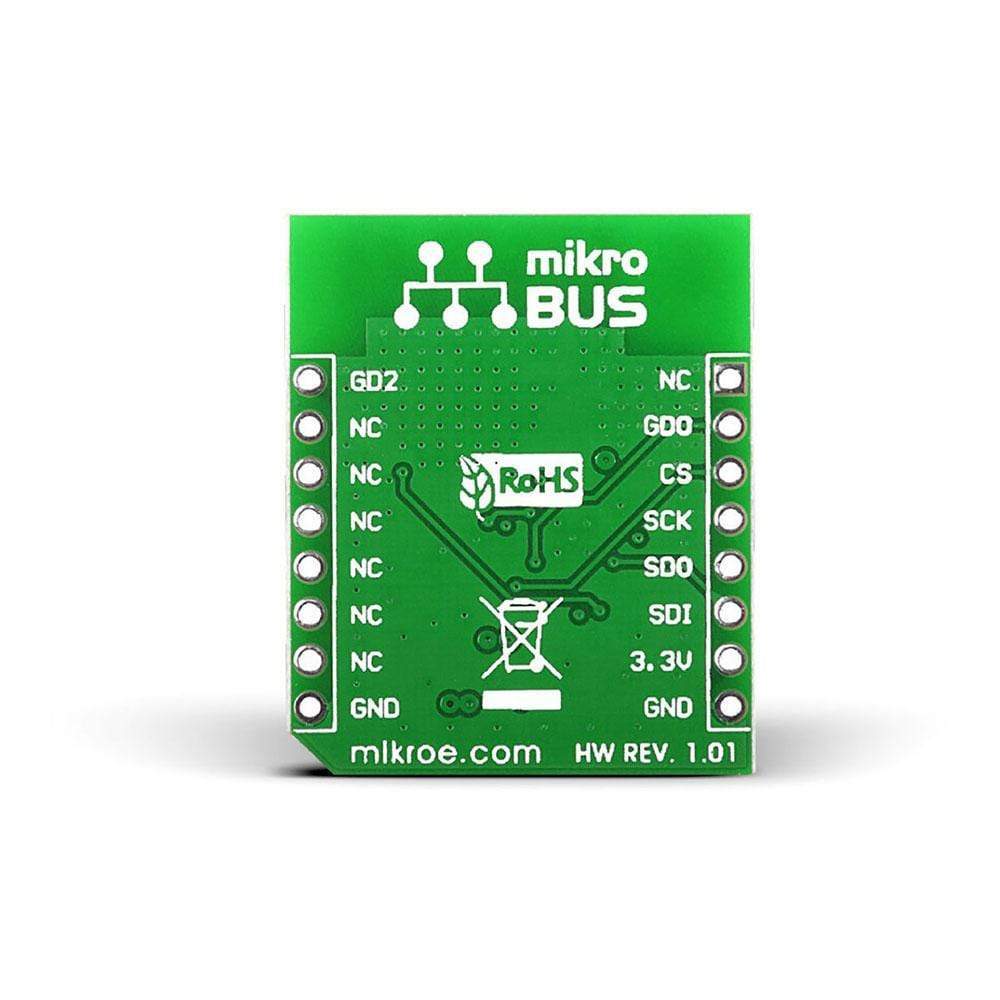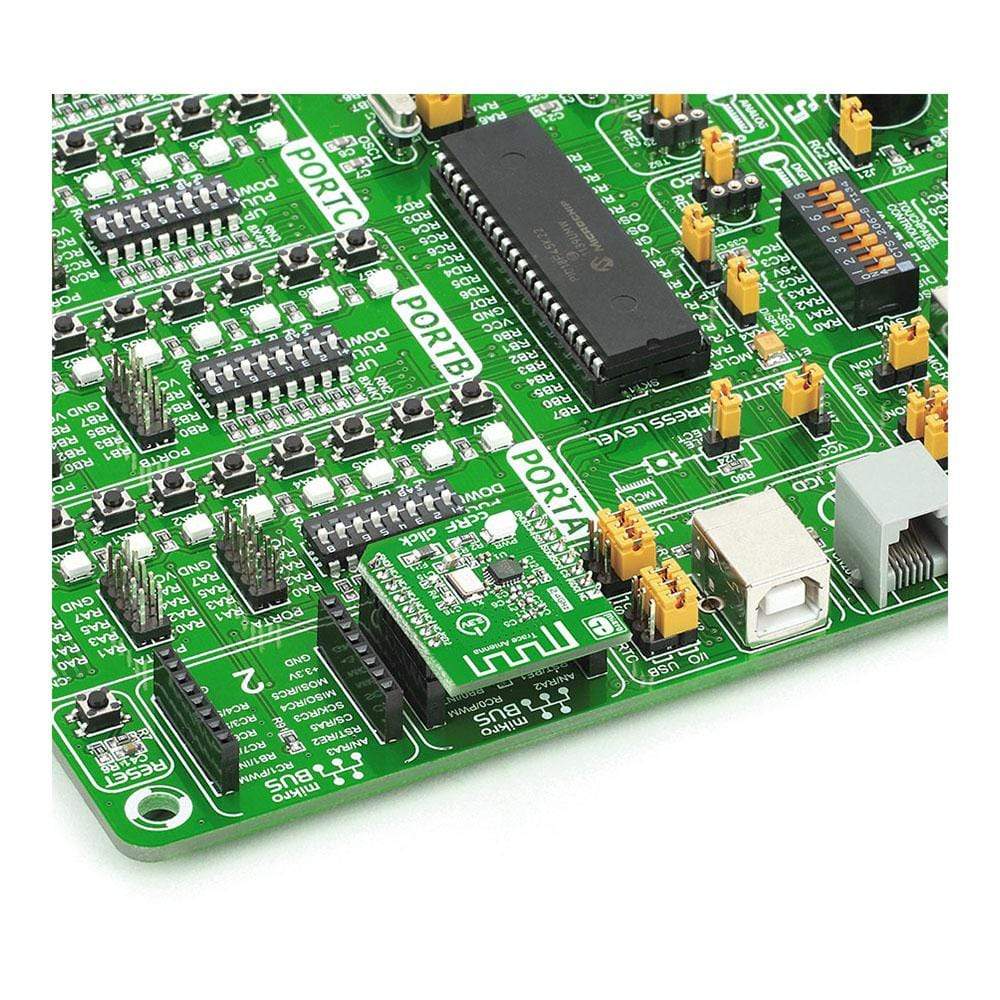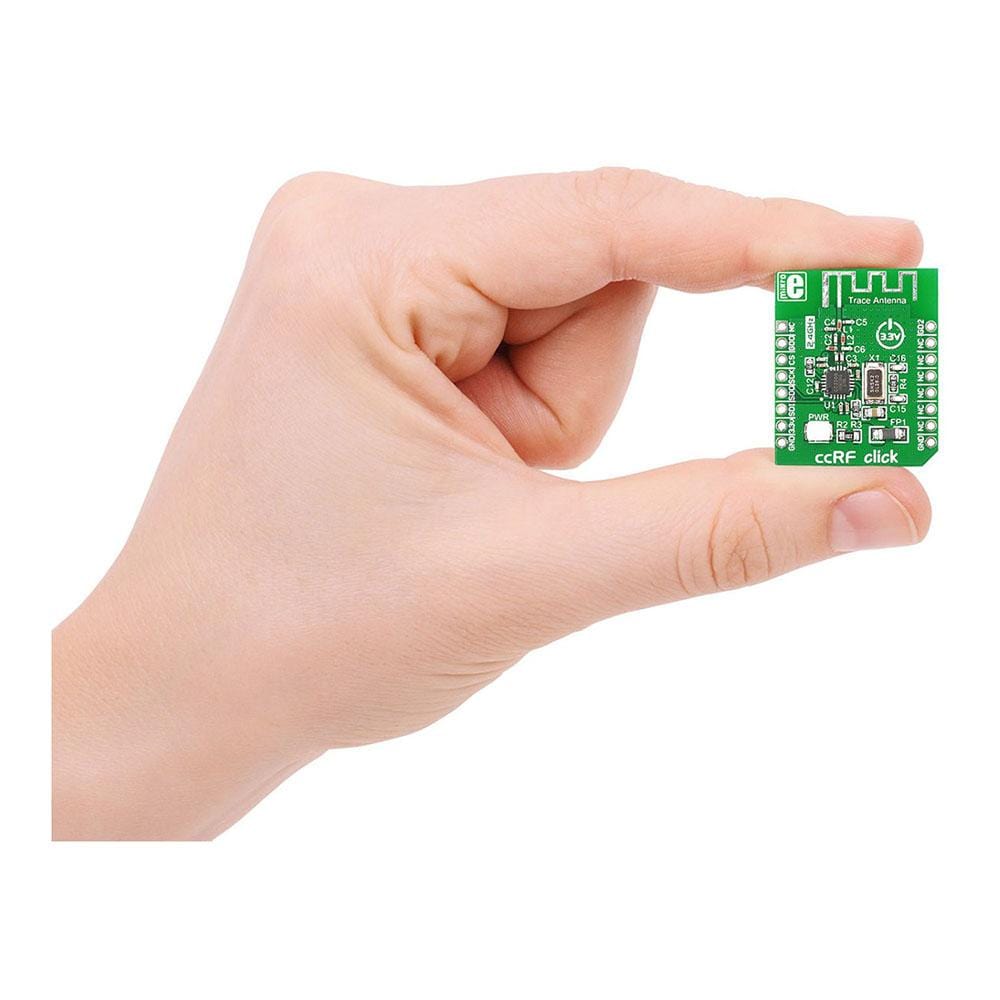



Overview
The ccRF Click Board™ from MikroE is an add-on communication board that employs a CC2500 low-power 2.4 GHz RF module, meant for the 2400-2483.5 MHz ISM (Industrial, Scientific and Medical) and SRD (Short Range Device) frequency band. The 2.4 GHz RF transceiver, designed for low-power wireless apps, is incorporated with a highly configurable baseband modem that supports several modulation formats. The board also features a PCB trace antenna. Intended for high sensitivity and low current consumption, the CC2500 module has a programmable data rate from 1.2 to 500 kBaud. The maximum device range is up to 20 metres in open space. The ccRF Click Board™ make use of the MikroBUS SPI (MOSI, MISO, SCK, CS), RST and PWM lines to communicate with the target board microcontroller. The board is designed to support a 3.3V power supply only. It has a green LED power indicator.
The ccRF Click Board™ is an ideal choice for consumer electronics, wireless audio, wireless game controllers, wireless keyboard and mouse, RF-enabled remote controls and many more.
Downloads
IC/Module: CC2500 2.4 GHz RF Transceiver
Intended for very low-power wireless applications, CC2500 is a 2.4 GHz transceiver integrated with a highly configurable baseband modem. It features a configurable data rate up to 500 kBaud, and is designed to work in the 2400-2483.5 MHz ISM and SRD frequency band. The main operating parameters and the 64-byte transmit/receive FIFOs of CC2500 is controlled through an SPI interface.
Low-Power Features
The ccRF Click Board™ operates with extremely low-power consumption. In the sleep mode, it consumes only up to 400nA current. It features wake-on-radio functionality for automatic low-power RX polling and has fast start-up time, i.e, 240 us from SLEEP to RX or TX mode.
PCB Trace Antenna
The ccRF Click Board™ is equipped with a PCB trace antenna that works in the 2400-2483.5 MHz frequency band. It has a range of up to 20 metres (maximum) in open space.
| General Information | |
|---|---|
Part Number (SKU) |
MIKROE-1435
|
Manufacturer |
|
| Physical and Mechanical | |
Weight |
0.035 kg
|
| Other | |
Country of Origin |
|
HS Code Customs Tariff code
|
|
EAN |
8606015074627
|
Warranty |
|
Frequently Asked Questions
Have a Question?
Be the first to ask a question about this.




